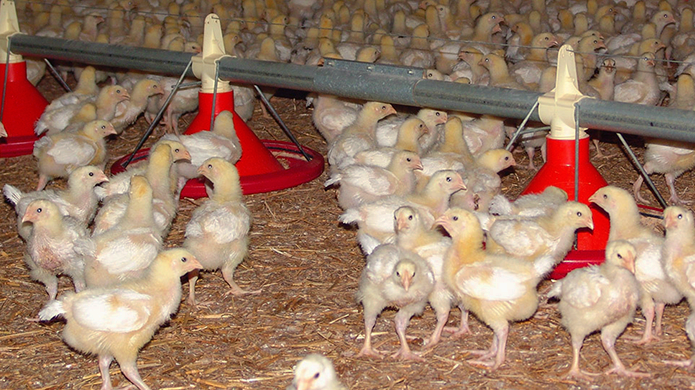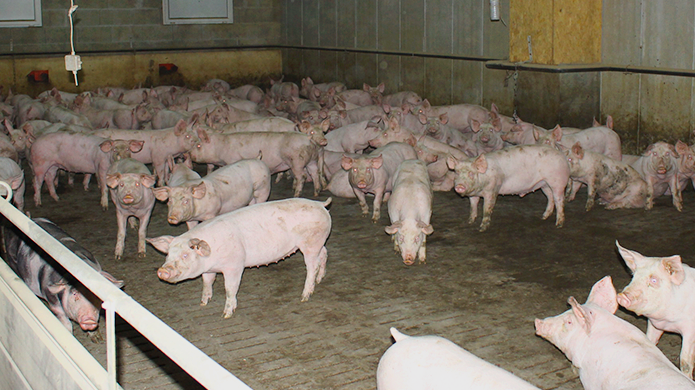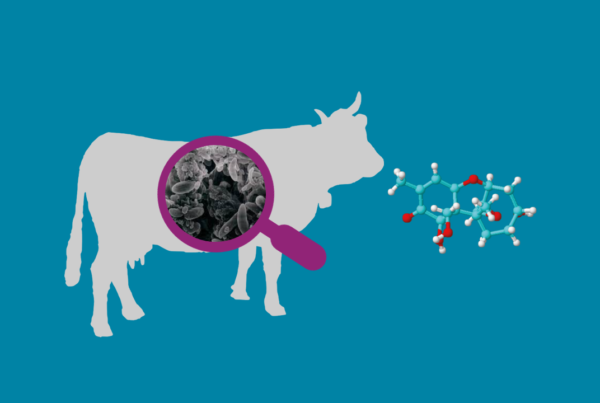What’s the best way to test toxin binders?
The Misset International Week by All About Feed was successfully held last November, where renowned international speakers from all around the globe gathered “virtually” to discuss diverse challenges within the livestock industry that farmers and producers have to overcome these present days.
Olmix, recognized by its wide expertise on mycotoxin risk management, not only did sponsor the webinar on this matter, but also contributed to the event through a lecture about the multiple ways of testing toxin binders, as well as shedding some light on the company’s research with the Brazilian Samitec Institute on a unique and patented combination of algae and montmorillonite to effectively reduce mycotoxins effects on animals.

Julia Laurain at the Mycotoxin Management webinar.
In vitro models to test toxin binders
When it comes to testing toxin binders, both in vitro and in vivo experimental models are to be on the table. When using in vitro models to evaluate the percentage of mycotoxin adsorption, it can be said that there are 2 major types of models:
- First, the static in vitro models including single concentration models and the isotherms models. Nevertheless, lots of studies demonstrated the limits of these models as their conditions are far from in vivo reality, the results can be easily influenceable and overestimating product real capacity.
- The second type of model, called dynamic in vitro model, aims to be closer to in vivo models by mimicking gastro-intestinal conditions but are more complex to implement.
“In vitro tests are very attractive as they are easy and cheap to implement, but they are also very variable and not as reliable as in vivo models. In vivo models have the advantage to evaluate toxin binders in real conditions even if there is not always direct measurement of binding. In vivo models are mostly based on performances criterions that are more practical and meaningful for farmers,” said at the webinar Julia Laurain, Olmix For Feed Product Specialist.
In vivo models: research with the Samitec Institute
Nowadays exist several in vivo experimental models that are applied and used worldwide for different animals and based on different methods like performances or toxicokinetic. Among them, there is one in particular, the in vivo model from the Samitec Institute in Brazil, which has proved to be very reliable.
“In Brazil, in order to qualify an additive as a toxin binder it must be tested within the Samitec institute. This Institute is an independent Research Center and partner with the Santa Maria Federal University (Brazil) and managed by Dr. Carlos Mallmann. Samitec has developed different animal models with excellent results,” Laurain said.

Along with the Samitec Institute, Olmix has obtained very good results with the renowned toxin binder MT.X+, which is a unique and patented combination of algae and montmorillonite that permits to increase the space between clay layers up to 10 times and thus the binding capacities.
Results in swine and poultry
In 2016, Olmix used the Samitec in vivo broiler model. This model used male broiler chicken from day 0 to day 21, being the study divided into 3 substudies, one by mycotoxin. The aim was to evaluate the toxin binder efficacy for each mycotoxin so they were tested individually.
Results with MT.X+ toxin binder:
- The effect on feed intake: the model works well as for all mycotoxin tested, a deep significant impact on feed intake was observed. MT.X+ permitted to compensate the loss in feed intake.
- The same trend was observed in body conditions, with a deep impact of mycotoxins alone and with a lower impact with a low dosage of MT.X+, and finally a very small impact or no impact with a high dosage of MT.X+.
“It’s important to link performances with biological parameters in order to better understand mechanism of actions. For instance, it is easy to check the effect of aflatoxin on the liver and how MT.X+ permits to limit this negative impact on liver health. On the other hand, fumonisins have a specific effect on liver metabolism by highly increasing the Sa:So ratio meaning the Sphinganine to Shingosine ratio, where again we can observe a protective effect of MT.X+”.

Poultry farm.
As for piglets, Olmix used this model on the same principle as for broilers, using 10 kg body weight piglets for 28 days when testing deoxynivalenol and aflatoxins, and 42 days when testing fumonisins.
What was observed:
- In the aflatoxins model, it was observed a deep impact of aflatoxins on the feed intake, body weight and biological markers like relative liver weight and the Lamic Samitec Index (liver health). MT.X+ significantly protected the effects of mycotoxins at both low and high dosages.
- The tested fumonisin contamination also deeply affected feed intake, body conditions and the Sa:So ratio as in the broiler model. In this model, even a low dose of MT.X+ allowed to fully compensate the deleterious effects of these mycotoxins.
- Finally, the piglet in vivo model also permitted to test the efficacy on deoxynivalenol. As for T-2/HT-2, this model was based on performances. A clear impact of deoxynivalenol could be observed on feed intake and body conditions and could be fully alleviated thanks to the high dosage of MT.X+.

Pig Farm.
“In a nutshell, we have to be careful with in vitro test as they are not always representative to the reality and can lead to bad choices and conclusions. So, it is highly recommended to use in vivo models to measure real performances, as much as possible correlated performances with biological criterion. A wide toxin binder is always a must as mycotoxins are always present in polycontamination scenarios,” Laurain explained.




